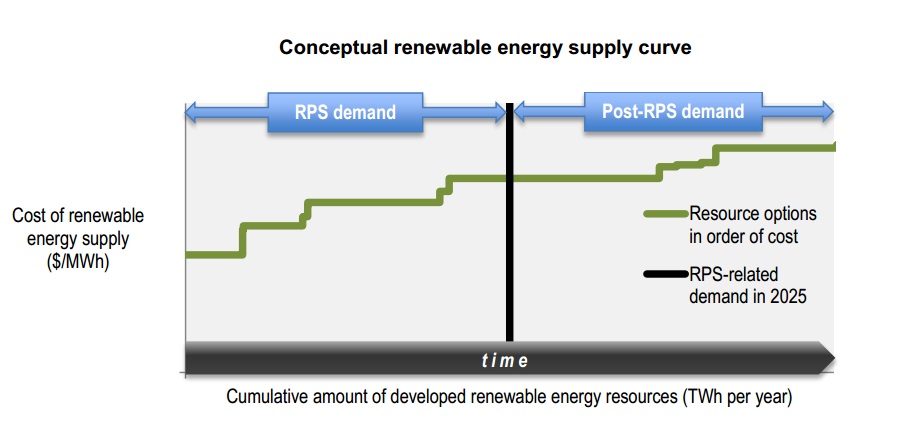Editor’s note: This article is the executive summary from an NREL report on
Several Western states have renewable portfolio standard (RPS) requirements that have driven significant expansion of wind, solar, and geothermal power. This study examines the renewable energy resources likely to remain undeveloped in the West by the time all these requirements have culminated in 2025. Development beyond that point will likely depend on the best of these remaining resources—where they are located, what it takes to get them to market, and how cost effectively they fit into a diverse portfolio of electric generation technologies.

Next generation policies may be simple extensions of existing RPS mandates, or innovative tools to address new conditions in the electric sector.
While the bulk of this study concerns future renewable energy supplies, its aim is to reduce some of the present uncertainty that complicates long term planning. These findings about the renewable resources likely to be available in 2025 can inform today’s discussions about policies targeting future development—policies that might be different from the RPS model. Many important factors outside the scope of this study are likely to affect those policies. The aim here is not to recommend a path, but to assess the supply conditions that—with many other factors—might affect future state policies and utility business decisions.
So far, most western utilities have relied primarily on renewable resources located close to the customers being served. This appears sufficient to keep most states on track to meet their final RPS requirements. What happens next depends on several factors difficult to predict at this in time. These factors include trends in the supply and price of natural gas, greenhouse gas, environmental regulations, changing consumer preferences, technological breakthroughs, and future public policies and regulations. Changes in any one of these factors could make future renewable energy options more or less attractive.
Nevertheless, it is possible to characterize the stock of renewable resources likely to remain undeveloped after meeting RPS requirements met, and to do so with a reasonably high degree of confidence. That is the purpose of this report. While the study does not answer questions about where future energy supplies should come from, it does reduce some of the uncertainty about one type of alternative: utility scale renewables developed for a regional market.
This study divides the timeline of renewable energy development into two periods: the time covered by state RPS policies as they exist today, and what may be termed “next generation” renewable energy policies. In the West, the last state RPS culminates in 2025, so the analysis uses 2025 as a transition point, as illustrated. Nextgeneration policies may be simple extensions of existing RPS mandates, or innovative tools to address new conditions in the electric sector.
NREL
http://www.power-eng.com/content/dam/pe/online-articles/documents/2013/08/NREL%20report.pdf
Filed Under: News, Policy




